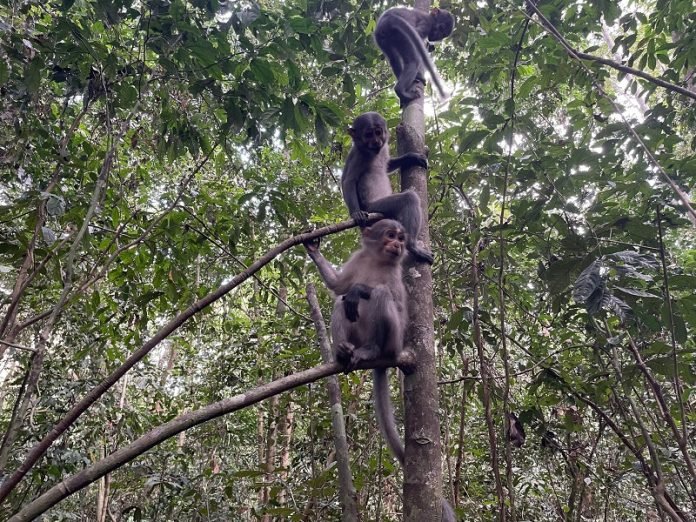
Ever wonder why humans have such flexible shoulders and elbows?
Researchers from Dartmouth have a surprising answer: it’s because our ancient ape ancestors needed to climb down from trees safely.
The scientists studied how chimpanzees and small monkeys called mangabeys climb in the wild. They noticed something interesting.
While going up the tree, both chimps and mangabeys kept their arms close to their bodies.
But while coming down, chimps stretched out their arms above their heads to grip onto branches, much like a person using a ladder. Mangabeys didn’t do this.
So why did chimps do this? The researchers think it’s because chimps are heavier, and stretching out their arms helps slow them down as gravity pulls them towards the ground.
This way, they don’t fall and hurt themselves. Luke Fannin, who led the study, says this skill of “downclimbing” helped shape the arms and shoulders of apes and early humans, making them different from monkeys.
Before this study, scientists mostly focused on how apes and early humans climbed up trees. But Fannin argues that the real challenge was in climbing down. If a heavy ape fell, it could be severely hurt or even die. Natural selection, the process that favors traits that are good for survival, would have preferred apes with the right body shape for safe climbing down.
Jeremy DeSilva, another researcher, said that the flexible shoulders and elbows we got from our ape ancestors were handy for early humans too. These early humans could climb up trees to escape danger and get food, then climb down safely. Later, as humans learned to use tools and fire, this flexibility helped them become better at hunting and defending themselves.
The scientists even used special sports software to compare the climbing styles of chimps and mangabeys. They found that chimps can fully extend their arms above their heads because their shoulders and elbows are built like ours. In comparison, mangabeys have less flexible joints that limit their movement.
Mary Joy, who was also part of the study, said that moving fast and flexibly could be more energy-efficient. She related it to her own experience as a trail runner, saying that running downhill with less restriction is less tiring than moving cautiously.
In conclusion, our incredible flexibility has deep roots, tracing back to the days when our ancestors needed to climb down from trees safely.
This flexibility is so useful that evolution kept it in humans, making tasks like throwing a football or reaching a high shelf easier for us today.
The study was published in Royal Society Open Science.
Follow us on Twitter for more articles about this topic.
Source: Dartmouth College.



